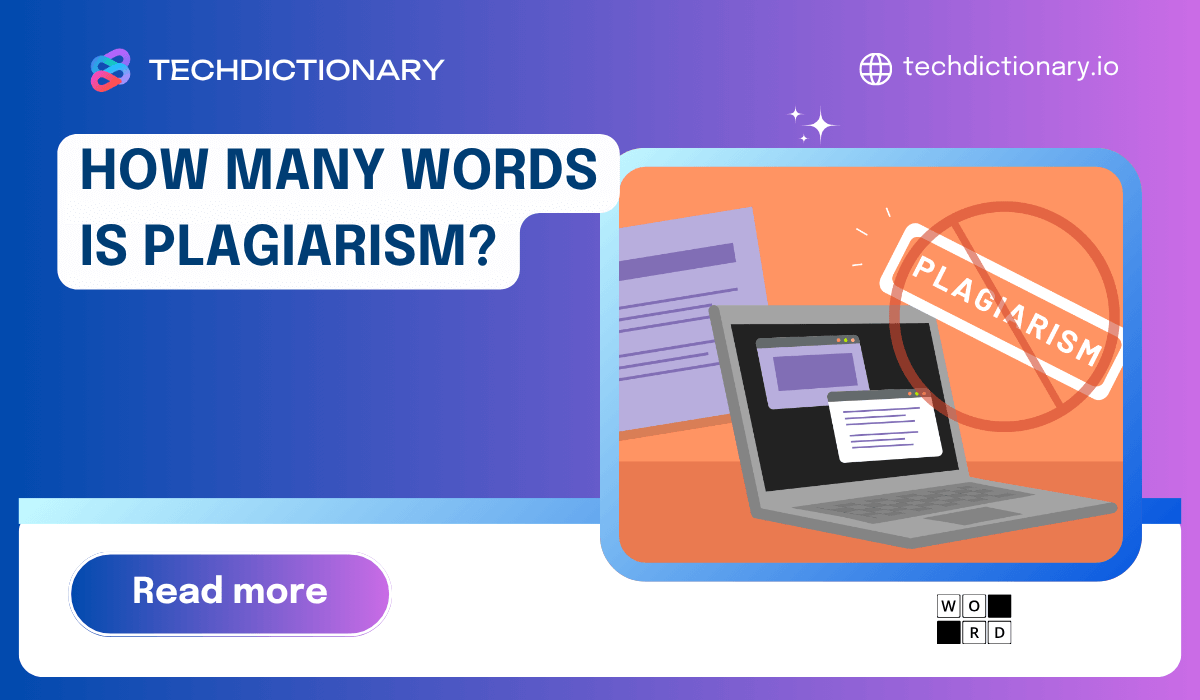
Ever written something and suddenly thought, “Wait… is this plagiarism?” In the fast-paced world of digital content, even a short phrase can raise red flags, which is why so many people ask themselves, “How many words is plagiarism?” Don’t worry, in this article, TechDictionary will clarify what plagiarism really is, offer tips on effective paraphrasing, and help you keep your work truly original. Let’s clear this up together!
There’s no official rule that says using five words in a row is plagiarism. While some people mention the “five-word rule” as a rough guideline, plagiarism isn’t about counting words—it’s about how you use them. If you take someone else’s language, even just a short phrase, and present it as your own without credit, it can still be considered plagiarism.
What really matters is the context. Are the words unique? Are you giving proper credit? If not, even a few borrowed words can cross the line. When in doubt, cite your source. It’s a simple way to stay honest and protect your work.
You may be interested in: What Percentage of Plagiarism Is Acceptable in 2025?
The so-called “five-word rule” isn’t an official standard—it’s just a loose guideline meant to raise awareness. Some believe that copying five or more words in a row without credit could be risky, but plagiarism isn’t about counting words. What really matters is whether the idea or expression is unique and if you’ve properly cited the source.
Not all short phrases require citation—common terms like “the Industrial Revolution” or “climate change effects” are widely used and not owned by any one source.
In the end, the “five-word rule” is just a reminder: when in doubt, cite your source. Giving credit—whether you quote or paraphrase—is the best way to stay honest in your writing.
Plagiarism happens when you use someone else’s words, ideas, or original work without clearly saying where it came from. TechDictionary sees this as a serious violation of honesty and fairness in learning and writing.
Here are common types of plagiarism:
So, if the idea or way of expressing it didn’t come from you, always cite the source. This not only respects the original author but also builds your credibility as a writer.
Paraphrasing is taking someone else’s ideas and putting them into your own words and sentence structure while still giving credit to the original author.
It’s more than just swapping out a few synonyms here and there. As TechDictionary understands, to effectively paraphrase, we need to:
So, how do you keep it original when paraphrasing?
Finally, finding the right balance, good paraphrasing means your writing:
While it’s best to build your own paraphrasing skills, tools like Quillbot can support your writing. One of the best paraphrasing tools, this tool is trusted by over 35 million students and professionals. It mainly improves grammar and clarity and offers a built-in citation generator with over 1,000 styles.

QuillBot Interface
To ensure that the final work is distinctly yours, TechDictionary suggests doing a thorough check. Passing your revised text through a comprehensive plagiarism-checking tool like Originality.ai or Winston AI can provide you with that extra peace of mind before you submit your work.

Originality.ai Interface
You may be interested in:
Is Using AI Considered Plagiarism? Find Out the Hidden Facts
Winston AI vs. Originality AI: Which AI Detection Tool is Better?
So, when you’re asking, “How many words is plagiarism?”, the real answer isn’t simply a number. It’s about honesty, originality, and giving credit where it’s due. Focus on understanding your sources, paraphrasing in your unique style, using AI tools wisely, and always citing correctly. That’s your best defence against any plagiarism worries!
Follow TechDictionary to learn more about plagiarism, paraphrasing, and keeping your writing original.

